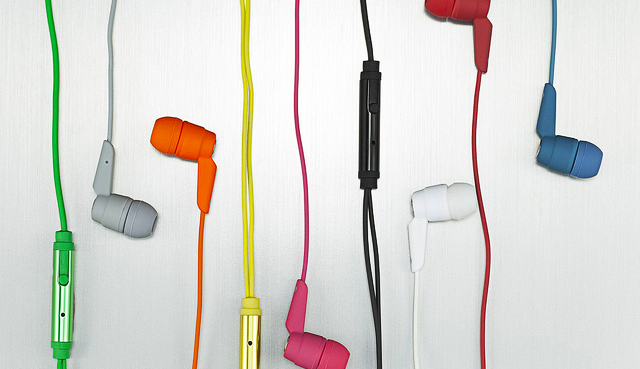 Two weeks ago a press release announcing the results of a STRATA Survey buried the lead. While its headline indicated a 45% jump in Ad Agency interest in digital video, the interest in “streaming/online radio saw a 53% increase.” There is no doubt that interest in video advertising is growing, but we can also see that Internet Radio is emerging from the novelty stage. It is becoming an important tool for reaching consumers.
Two weeks ago a press release announcing the results of a STRATA Survey buried the lead. While its headline indicated a 45% jump in Ad Agency interest in digital video, the interest in “streaming/online radio saw a 53% increase.” There is no doubt that interest in video advertising is growing, but we can also see that Internet Radio is emerging from the novelty stage. It is becoming an important tool for reaching consumers.
At XAPP, we are interested in why agencies and advertisers are increasingly turning their attention and budgets toward Internet radio. The data paints a story with a few items that casual observers often find surprising.
Earbud and Headphone Proliferation: 100 Million Consumers
Data from Edison Research suggests that over 124 million consumers are listening to Internet Radio each month and 100 million on mobile devices. These listeners also tend to listen for long periods of time and with high frequency due to the convenience of mobile.
In the past, radio listening would be interrupted when a consumer left the home or arrived at their destination and parked the car. Today, consumers are taking that audio content from the car into the workplace without a break. They also are consuming audio on public transportation, on the street, in the gym and while doing housework. Mobile devices have made audio an always-available content medium. This fact is a key reason why Edison also cited in the 2014 Infinite Dial Report that online radio listening now averages over 13 hours per week.
The key takeaway here: agencies and advertisers are turning to Internet radio because it now commands a large audience that devotes a lot of time each week to the medium. Advertising spend tends to be a lagging indicator, but it eventually shifts to the channels where consumers spend time. According to eMarketer estimates, Internet radio ad spending increased 26.3% in 2013. This appears to reinforce the STRATA findings.
Radio Ads are Spotlighted and Not Abandoned
 A long-standing benefit of radio ads is what many refer to as the Spotlight. You only hear one radio ad at a time. Unlike visual display advertising, radio ads do not compete for consumer attention with three other simultaneous offers on the screen. Nor do radio ads compete for attention with the core content since they are served between audio content segments. That spotlight means consumer attention is not distracted and the ad commands center stage.
A long-standing benefit of radio ads is what many refer to as the Spotlight. You only hear one radio ad at a time. Unlike visual display advertising, radio ads do not compete for consumer attention with three other simultaneous offers on the screen. Nor do radio ads compete for attention with the core content since they are served between audio content segments. That spotlight means consumer attention is not distracted and the ad commands center stage.
The other provocative benefit of audio advertising is ad listen-through rates. Two studies from 2006 and 2011 on this topic paint a compelling picture. In 2006, the research found that 92% of listeners stayed with the channel through the entire audio ad and in 2011 the number had climbed to 93%. When you consider that switching between apps has even higher friction than switching radio stations, there is compelling evidence that Internet Radio ads are heard in their entirety.
This listen-through rate contrasts with studies about banner blindness and even online video ad completion. A study by Infolinks in 2013 revealed that 86% of consumers had no recollection of the most recent display ad they had been exposed to online. Another article cited a VideoNuze statistic that 50% of pre-roll videos were abandoned before completion when that was an option. Radio seems to have the unique ability to get the entire advertising message across without distraction.
Cultivating a Valuable Audience
Demographic trends may be another point driving advertiser interest in Internet Radio. While the segment has grown significantly across all age groups, Edison reports that more than 75% of 12-24 year olds and 50% of 25-54 year olds listen to Internet Radio monthly. For most advertisers, these are the prime targets.
At the same time, we have seen a remarkable shift of Internet Radio listening migrate from subscription to an ad supported model. Current Accustream Research estimates peg ad supported listening hours will be nearly 55% in 2014 and growing to over 61% by 2017.
Making the Most of a $2 billion in Ad Spend
These trends of a large and growing audience, more time spent and a favorable demographic skew all support the thesis that advertisers should now view Internet Radio as a mainstream channel to reach consumers. Given the trends, it is not surprising that BIA/Kelsey estimates that advertising spend will grow from $1.65 billion in 2014 to over $2 billion by 2016. Debates on viability of the many Internet Radio business models will no doubt continue. However, there is little doubt that advertisers now recognize that Internet Radio is a powerful new tool to reach consumers.
Related Posts
The Data Piles Up – Radio Serves Ultramobile Listeners
Three Faces of Effective Advertising: Motivation, Method & Measurement
Unpacking the Data on Mobile Ad Effectiveness
